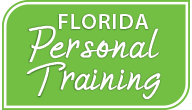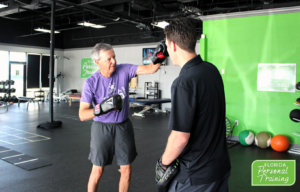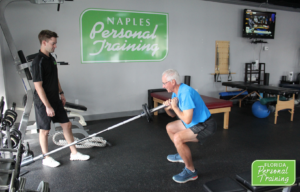While older men and women needn’t become powerlifters, athletes who lift massive weights, experts say strength training — using weights heavier than you might expect — can be an important component of a healthy future.
Beginning about age 30, men and women lose muscle mass at about the rate of 10 percent per decade until about 50, when that loss accelerates to 15 percent per decade, according to research.
By the eighth decade, the loss of muscle mass — known as sarcopenia — and strength can be severe, greatly affecting quality of life by increasing the odds of falls and bone breaks that can cascade into other medical problems.
When we talk about bone health and falls, we talk about three factors: fall, fragility and force. Participating in weight-bearing and resistance-training exercises helps develop muscle mass. This may help treat fragility conditions like osteoporosis. So if you fall you have stronger bone density. It may also lead to more cushioning when you do fall.
Building strength can also help with the ability to stay independent as someone ages. Strength declines rapidly if it’s not maintained. Without it, daily activities like picking up a bag of groceries, opening a kitchen cabinet or getting in and out of a chair can become difficult.
Resistance training can be part of the antidote, but picking up five-pound dumbbells and doing a few biceps curls won’t get you where you need to be!
In daily life, you’re going to need to lift things bigger than five pounds all the time. You might also need to catch yourself from falling, or get yourself off the floor. Both require far more strength.
For the best results, experts say a varied, heavier workload is needed.
If you want to offset age-related muscle loss, you need to be working at an intensity of 60 percent to 80 percent of your maximum load [meaning the highest amount you can lift]. You can’t recruit your muscles if you aren’t working hard enough.”
If you don’t overload your tissues, they won’t respond. If you continue using the same weights and rep scheme, you’ll actually go backwards. The body wants and needs to be challenged.
Have a good routine
Before embarking on a program of heavier weight training, however, it’s important to get a medical checkup, particularly if the person is middle aged or older, with a focus on heart health to ensure it can handle the demands. And it’s important to assess whether there are any muscular problems or bone issues that need to be worked with before starting a new regimen. The approach should be very individualized. If vascular health is good, there’s not much off limits, but you need to start simple and progress.
After that, finding a qualified Exercise Specialist who specialize in working with the active aging population is the best place to learn how to lift weights without injury and also obtain guidance for progression to heavier loads.
Many gyms offer basic weightlifting classes using everything from barbells, dumbbells and kettlebells, or, in larger gyms, even a TRX system, a suspension system of straps that taxes you with body weight.
At the heart of a good strength routine, are several moves. You need to be able to push, pull, hinge at the hips, carry and squat. And as you age, you must be able to get up off the floor in case you fall. This is what saves lives.
Developing good balance is also important, and something you can work on with your strength routine. Mortality rates within a year of a hip fracture in populations over 60 range between 14 percent and 58 percent.
The most common algorithms to assess fall risk recommend strength and balance exercises whether you are found to have low, moderate or high risk for falls. If it is not challenged, balance disappears with age. Strength moves that meet this need include those like a split squat — where one leg is in front in a lunge position.
The good news is that to make the strength and balance gains you need, you won’t have to invest a massive amount of time.
Three to four sessions a week that include 20 to 30 minutes of intense training does it. Use some of that time to practice your moves with good form. Especially for beginners, a trainer can help discern the right starting weight as well as watch your form to help you make adjustments and ensure you are executing the moves properly.
Good form is key and should serve as a guiding principle. Your workload should be determined by your ability to complete it with the proper form.
Another guiding principle is progressing in small increments. We know that spikes in volume or intensity increases the risk of injury. In general, this means increasing either at a rate of about 10 percent week to week.
If you begin chest pressing using an empty barbell pole — weighing 35 pounds for women/45 for men — then you’d go up 3.5 pounds/4.5 pounds the next week, assuming you have proper form at the lower weight and have performed the exercise several times the previous week so your muscles are prepared.
Keep fit and confident
Stephanie Stout, 68, has been active all her life — including as a collegiate swimmer.
Since college, she has been a runner and has weight trained. But two years ago, she felt like her strength-training routine had stagnated, so she began taking personal training sessions at Florida Personal Training that included a large element of strength training.
Today, she says her legs have more muscle tone, her back is stronger and her overall body composition has changed.
And progressing to lifting much heavier weights has made a difference. “I don’t need to return to the strength level of my college days, but I want to take advantage of the things I can control as I age,” she says.
“I see some of the older people in my life and how they have to work to do simple things, like getting out of the car,” she says. “I feel confident in my strength and movement and I want to stave off losses as long as possible.”





